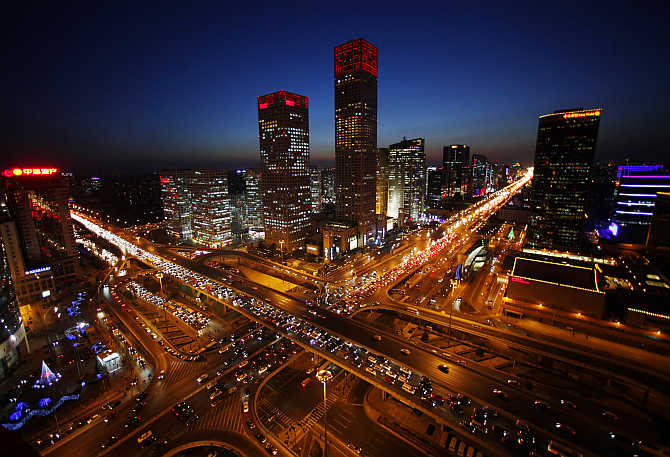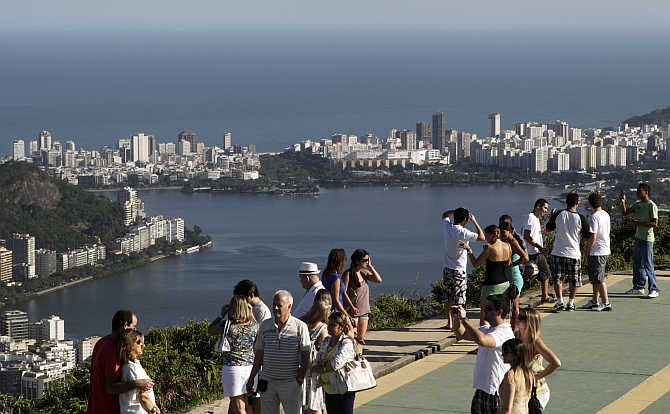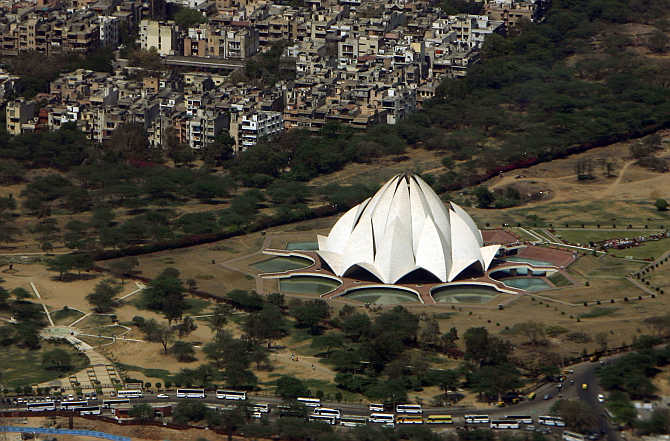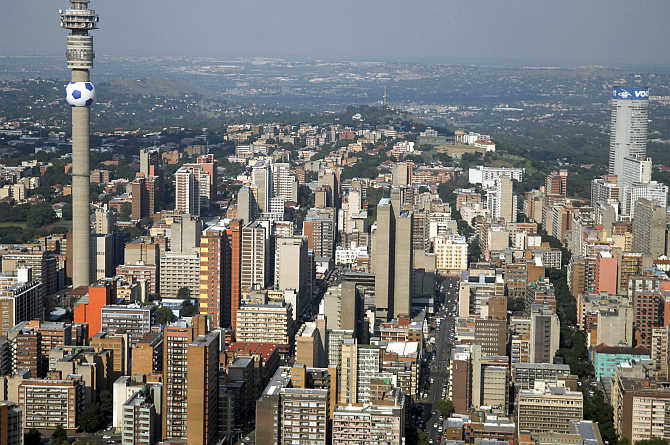 | « Back to article | Print this article |
Brics to float $100-bn currency pool
Brics (Brazil, Russia, India, China and South Africa) nations have agreed to set up a $100-billion foreign currency reserve pool to counter the impact of a pull-out by foreign investors when the US Federal Reserve started tapering its quantitative easing programme.
The US Federal Open Market Committee meeting, scheduled for September 17-18, is expected to indicate when the Fed might start tapering the stimulus programme. China would contribute $41 billion towards the currency reserve pool. Brazil, India and Russia would contribute $18 billion each to the fund, while South Africa would contribute $5 billion. No timeline was drawn for the fund to become operational.
Click NEXT to read more...
Brics to float $100-bn currency pool
Prime Minister Manmohan Singh hailed the announcement on the currency pool, to be called the contingent reserve arrangement. “The prime minister welcomed the progress on CRA. This acquires greater salience in light of the global currency volatility,” Foreign Secretary Sujatha Singh told the media.
On Friday, there could be an announcement on the $15-million currency swap agreement signed between India and Japan in 2011 to tackle any depletion of foreign exchange reserves.
Click NEXT to read more...
Brics to float $100-bn currency pool
According to a news agency, China, along with Russia, warned other emerging nations in the Brics bloc against the risk of a balance-of-payment crisis and recommended policy action to tackle the problem. The two countries favoured raising interest rates and devaluation of currencies by countries that faced BoP risks.
India, however, said no such views were expressed during the informal meeting of Brics leaders on the sidelines of the G20 summit and declined to comment on the statements by Russia and China.
Click NEXT to read more...
Brics to float $100-bn currency pool
India has denied its current economic woes are comparable to the 1991 BoP crisis. Brics nations also decided to have a New Development Bank, with an initial subscribed capital of $50 billion. The bank would meet infrastructure needs of emerging markets.
At their meeting, the Brics leaders pointed to the continued slow recovery, high unemployment in some countries and ongoing challenges and vulnerabilities in the global economy, particularly in advanced economies. They emphasised major economies could do more to boost global demand and market confidence.
Click NEXT to read more...
Brics to float $100-bn currency pool
“In light of the increase in financial market and capital flow volatility during recent months, Brics leaders reiterated unintended negative spillovers of unconventional monetary policies of certain developed economies. They emphasised eventual normalisation of monetary policies needs to be effectively and carefully calibrated and clearly communicated,” the Brics countries said in a statement.
Brics leaders also expressed concern over the stalling of the International Monetary Fund’s reform process.
Click NEXT to read more...
Brics to float $100-bn currency pool
They stressed the urgent need to implement the 2010 IMF quota and governance reform, as well as to complete the next general quota review by January 2014, as agreed at the G20 Seoul Summit, to ensure the fund’s credibility, legitimacy and effectiveness.
“The leaders look forward to the ninth World Trade Organization ministerial conference to be held in December 2013 and expect it would be a stepping stone to the successful and balanced conclusion of the Doha development round,” the Brics statement said.
Click NEXT to read more...
Brics to float $100-bn currency pool
On Thursday, IMF said India might have to adopt a tight monetary stance. It favoured allowing exchange rates to adjust according to economic fundamentals.
This financial year, the rupee depreciated 20.41 per cent against the dollar, as of Thursday. Much of the depreciation happened after May 22, when the US Federal Reserve had indicated tapering its bond-buying programme. In the April-May 22 period, the rupee lost about one per cent against the dollar.







